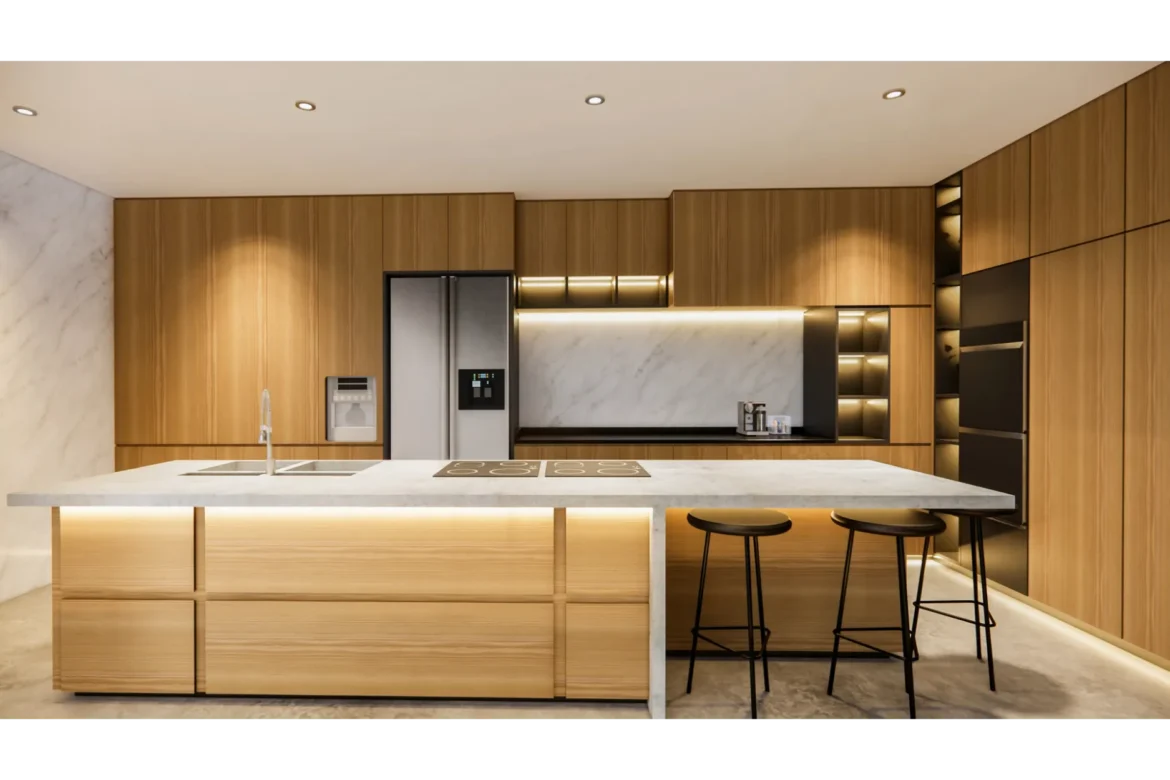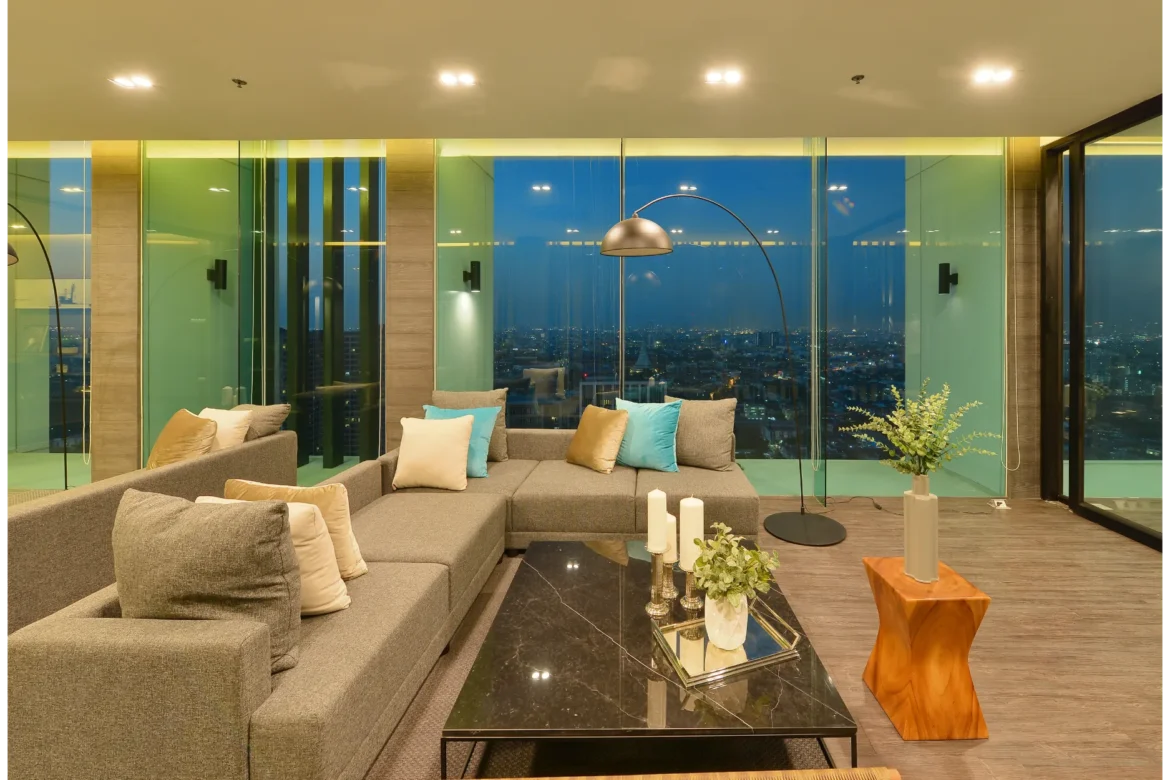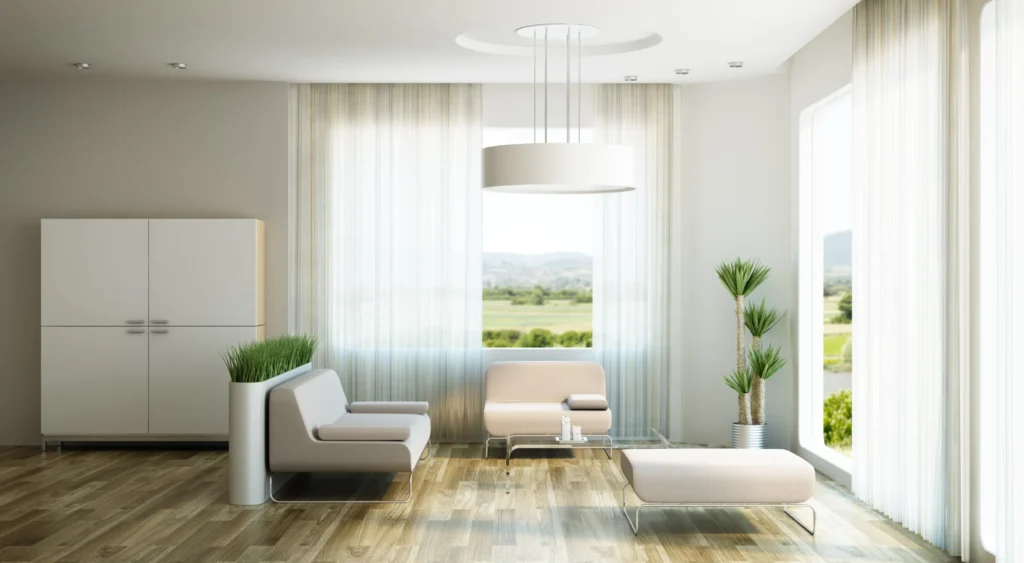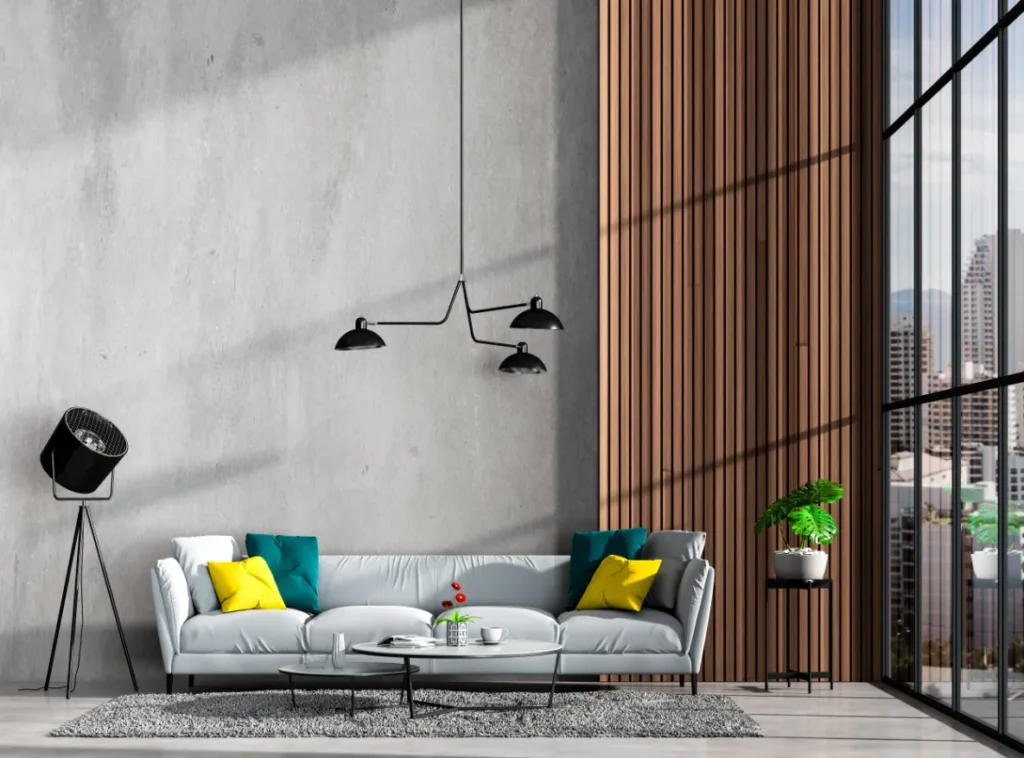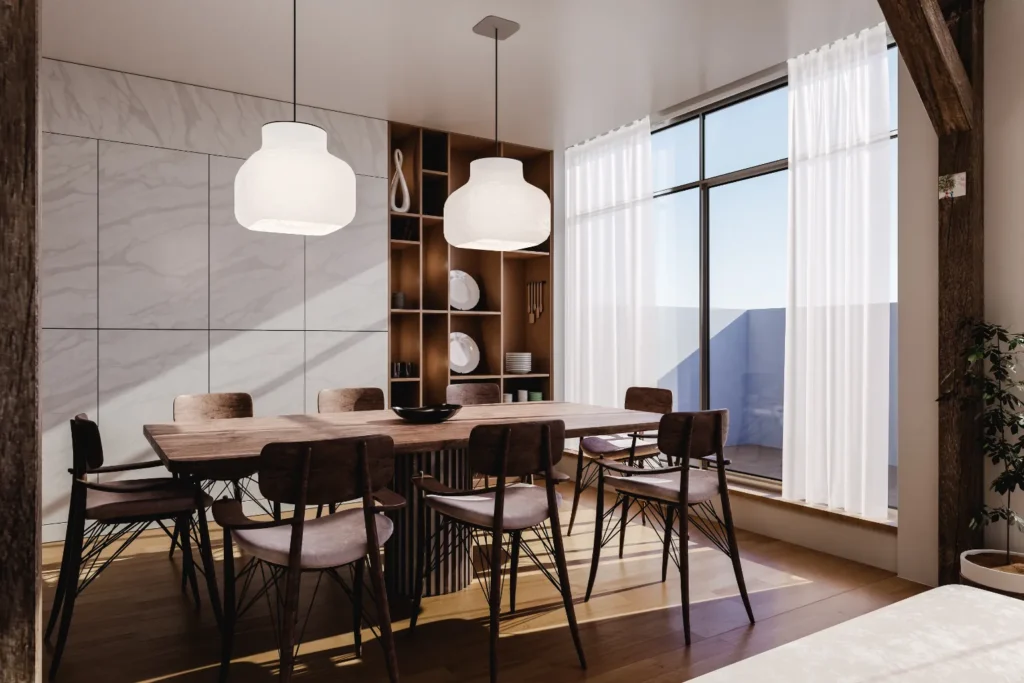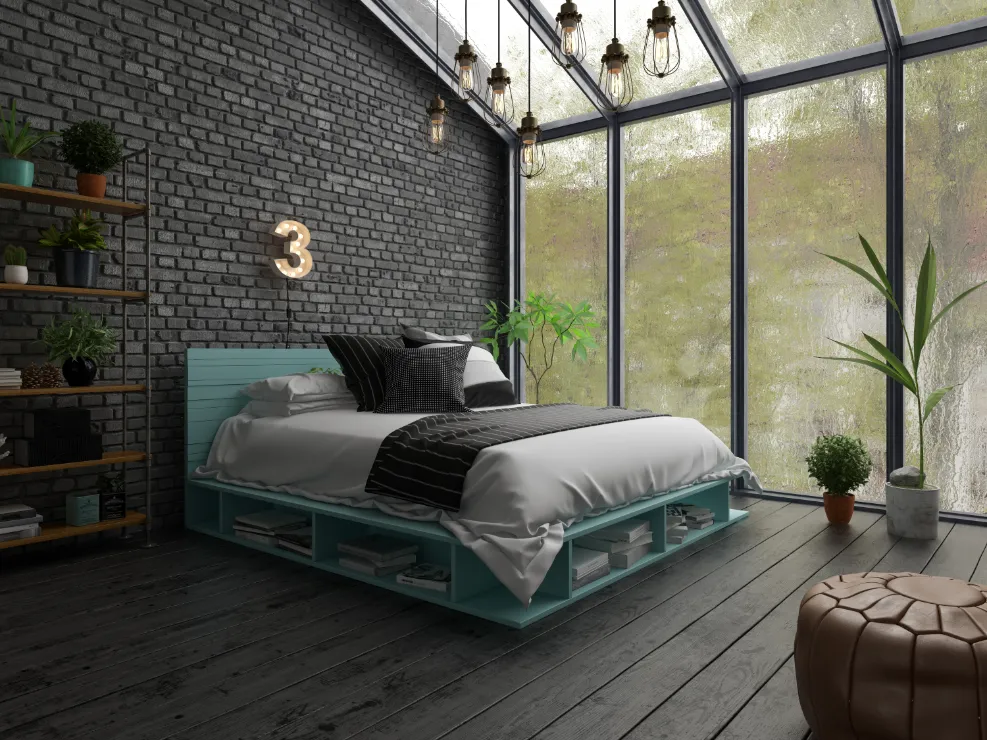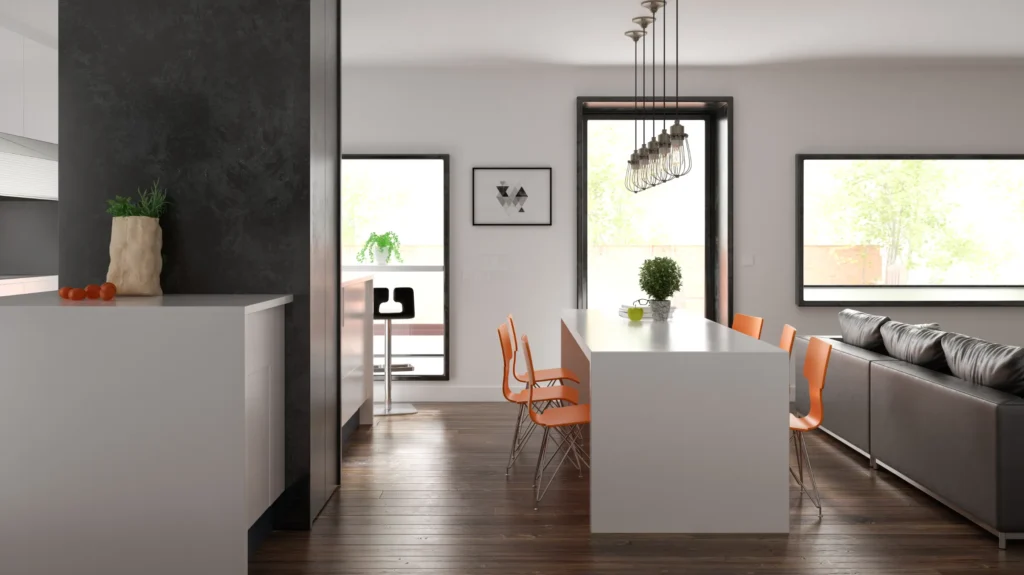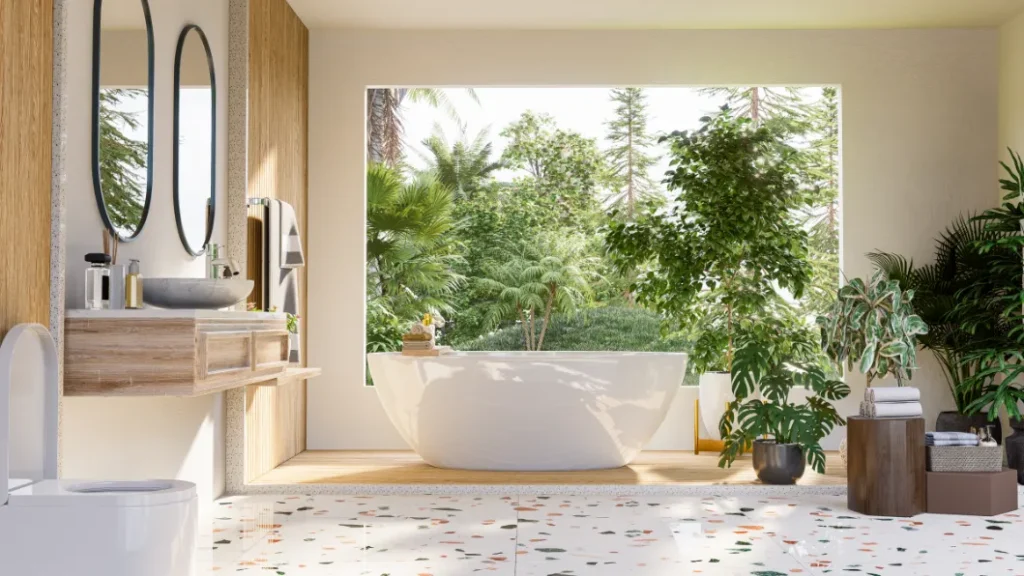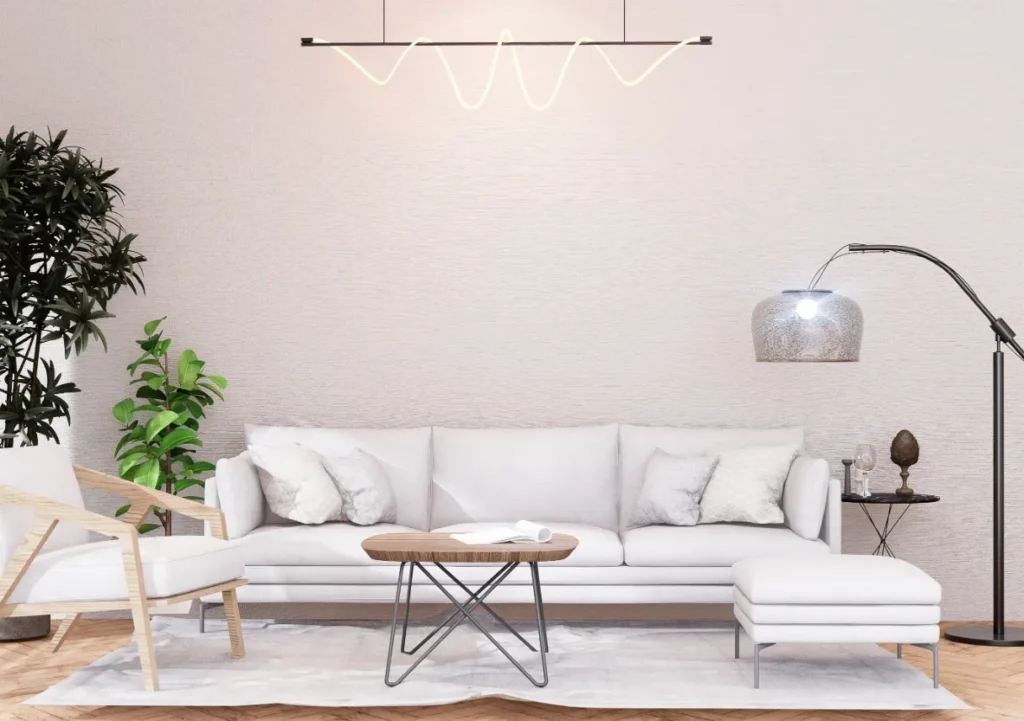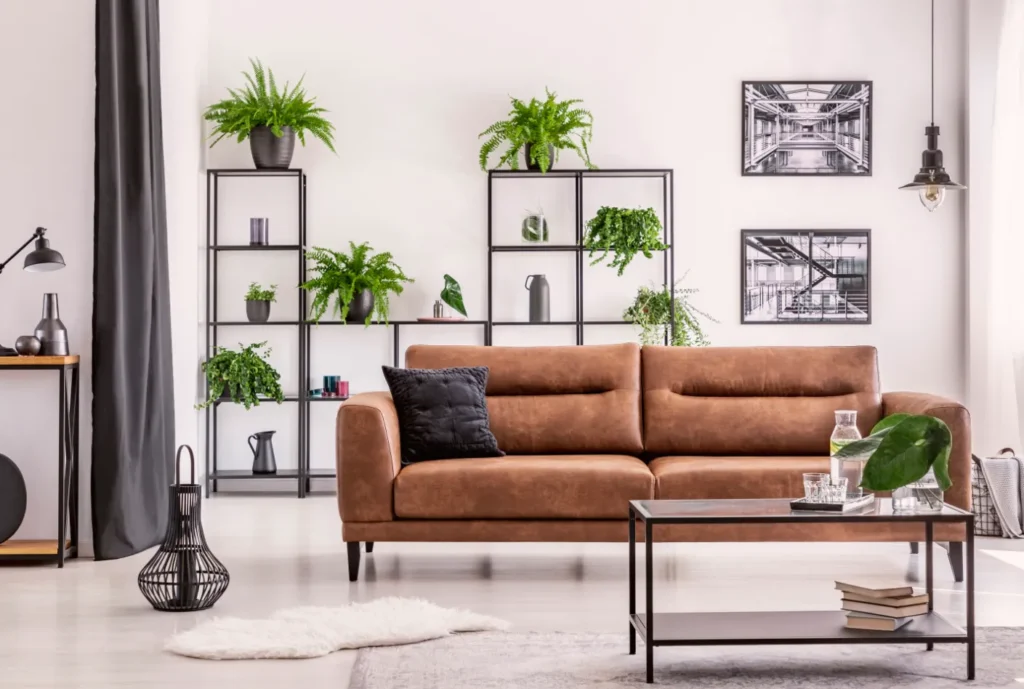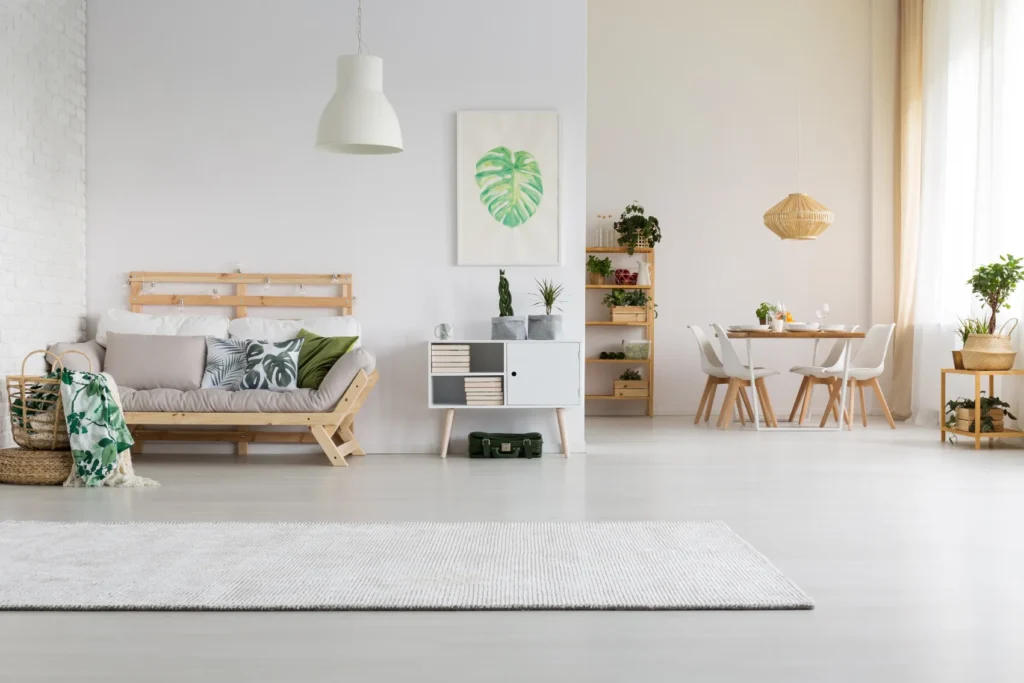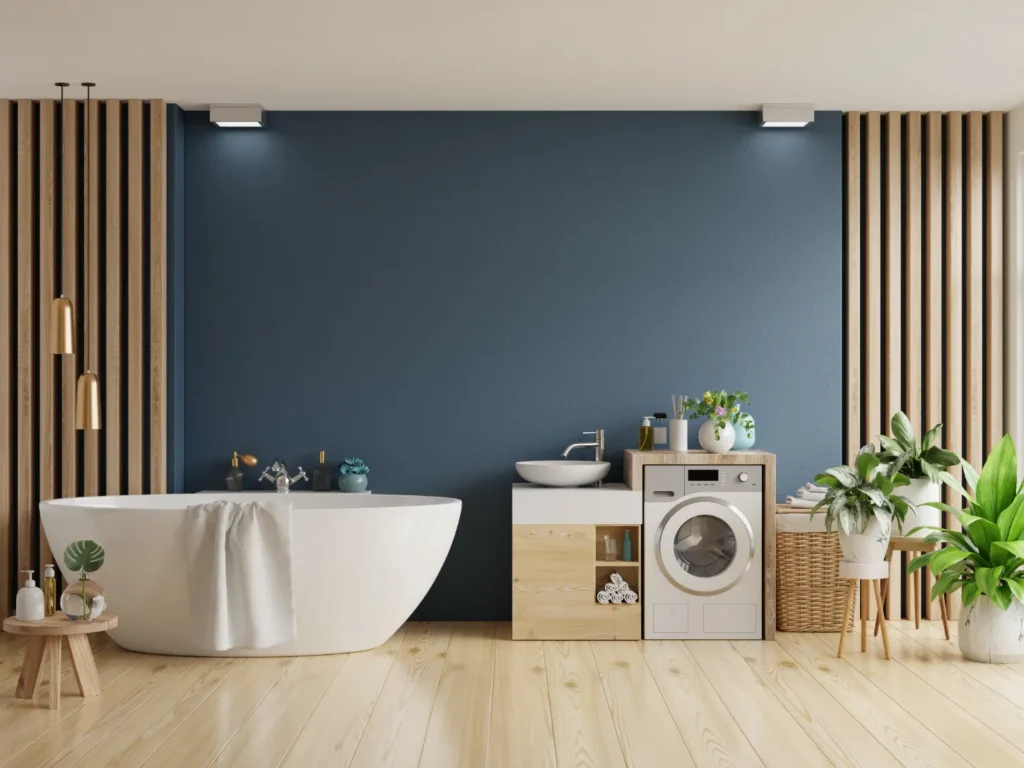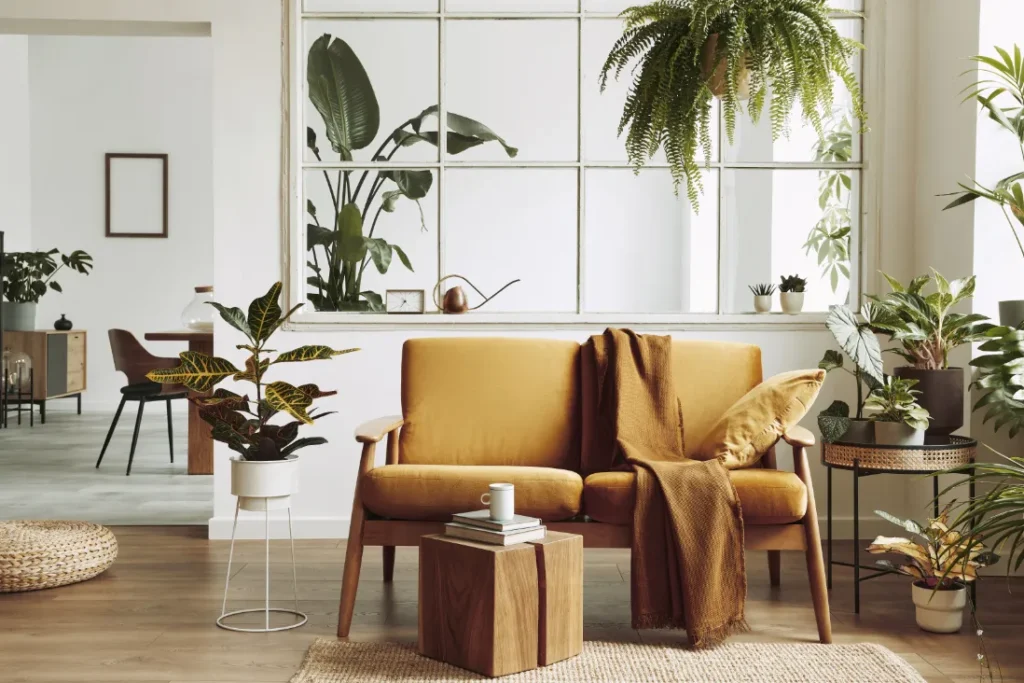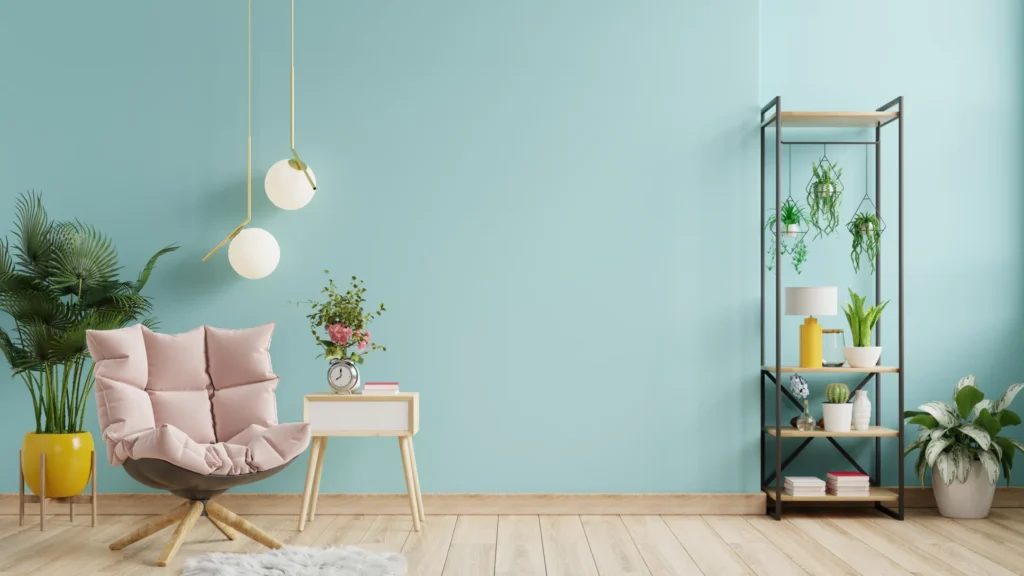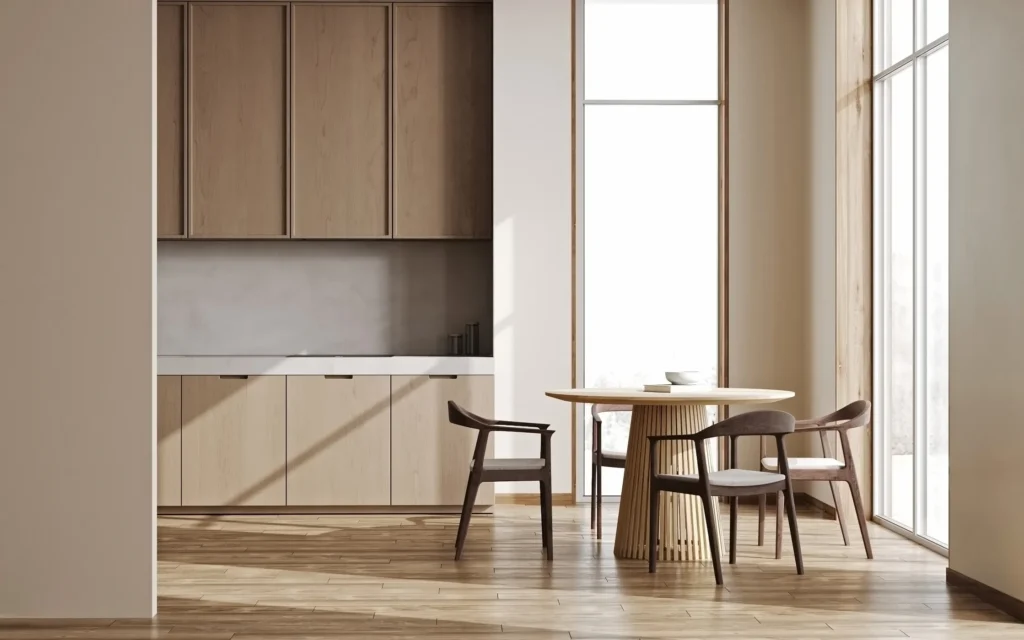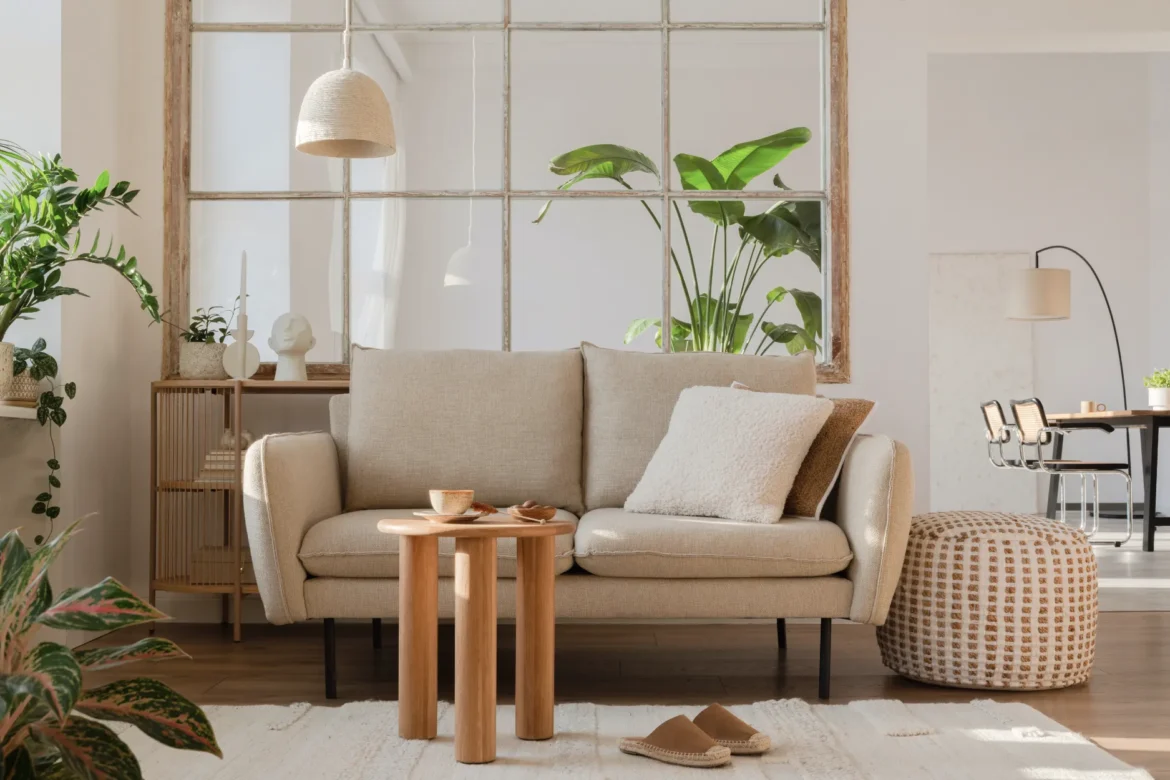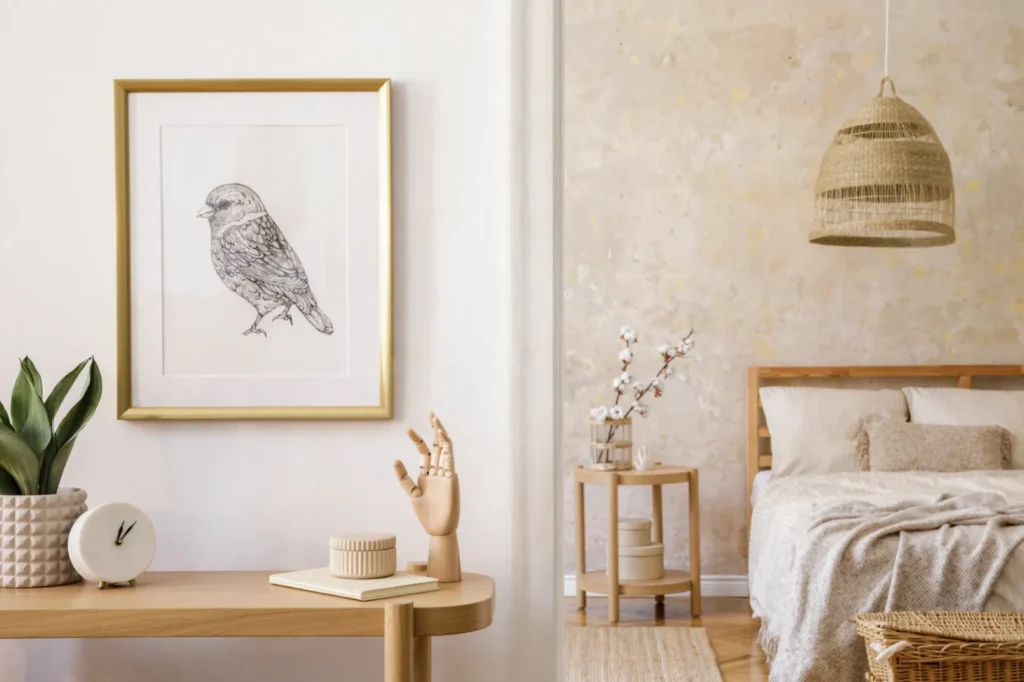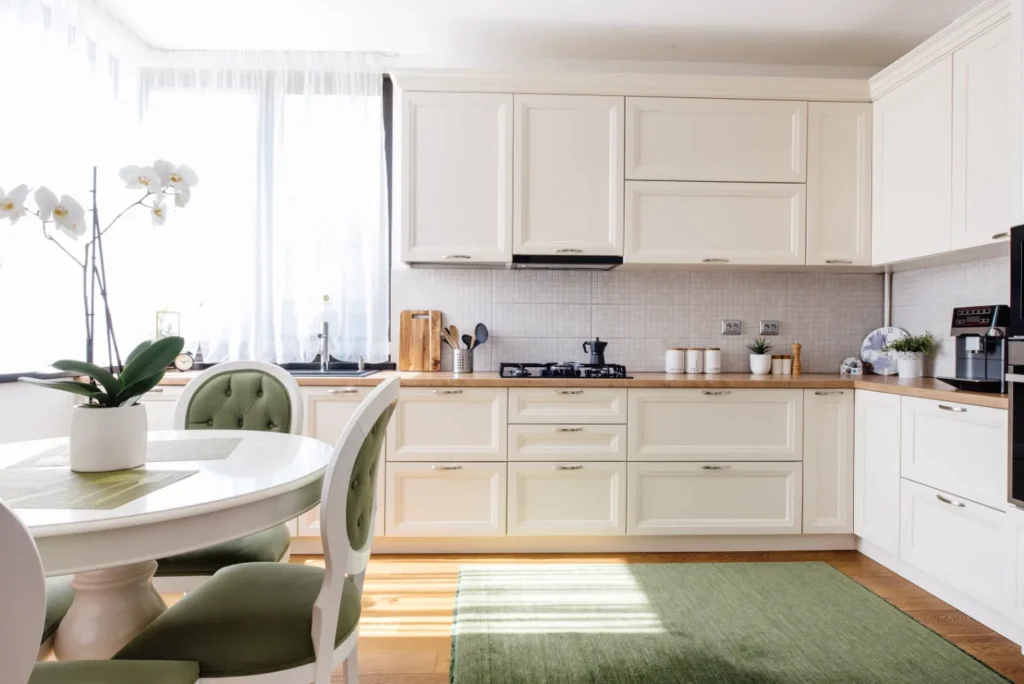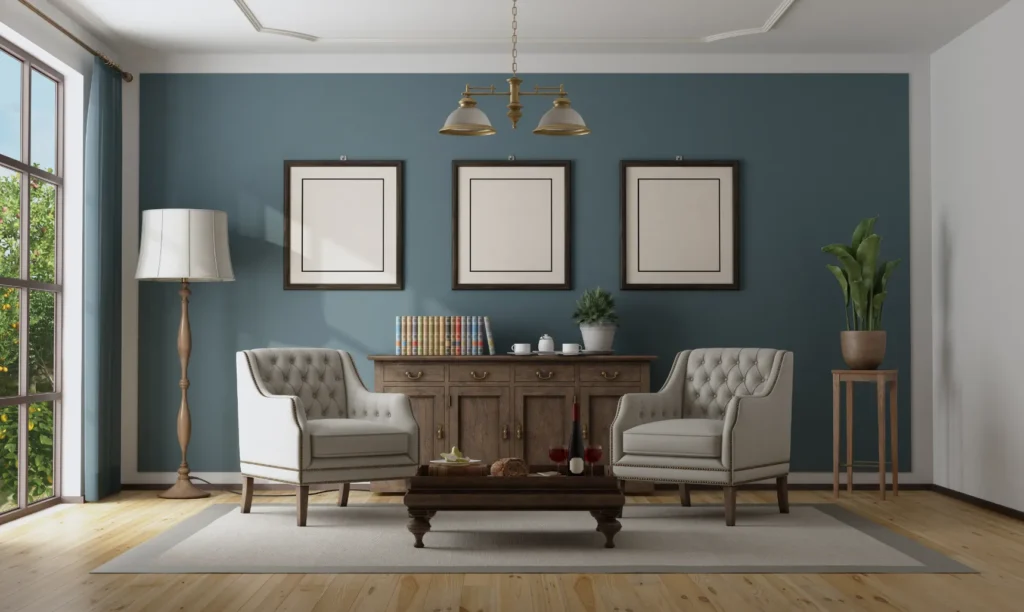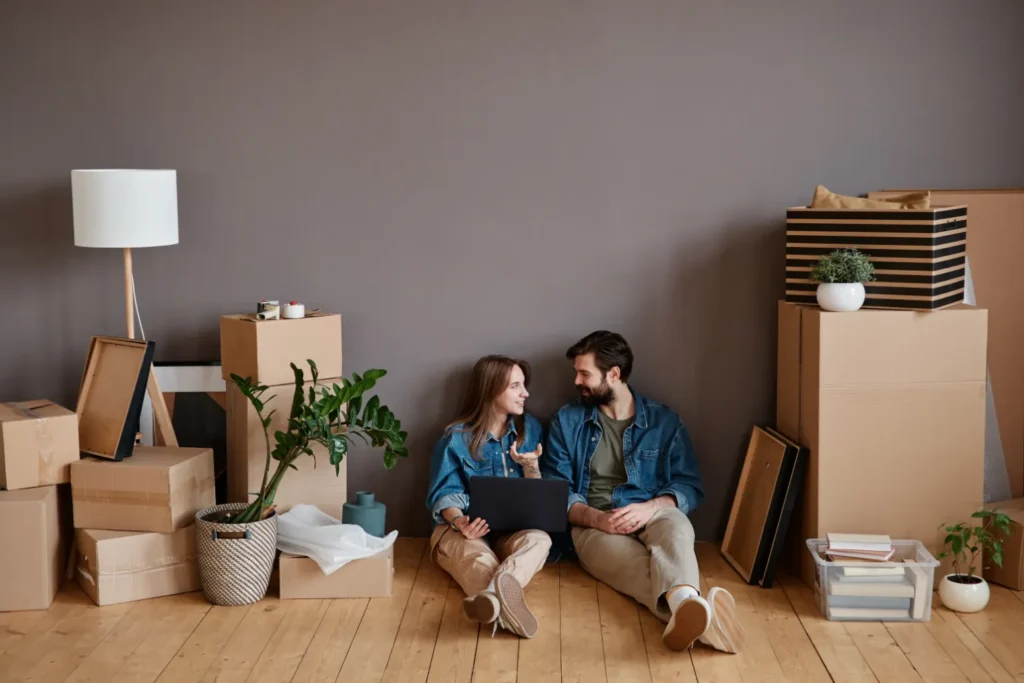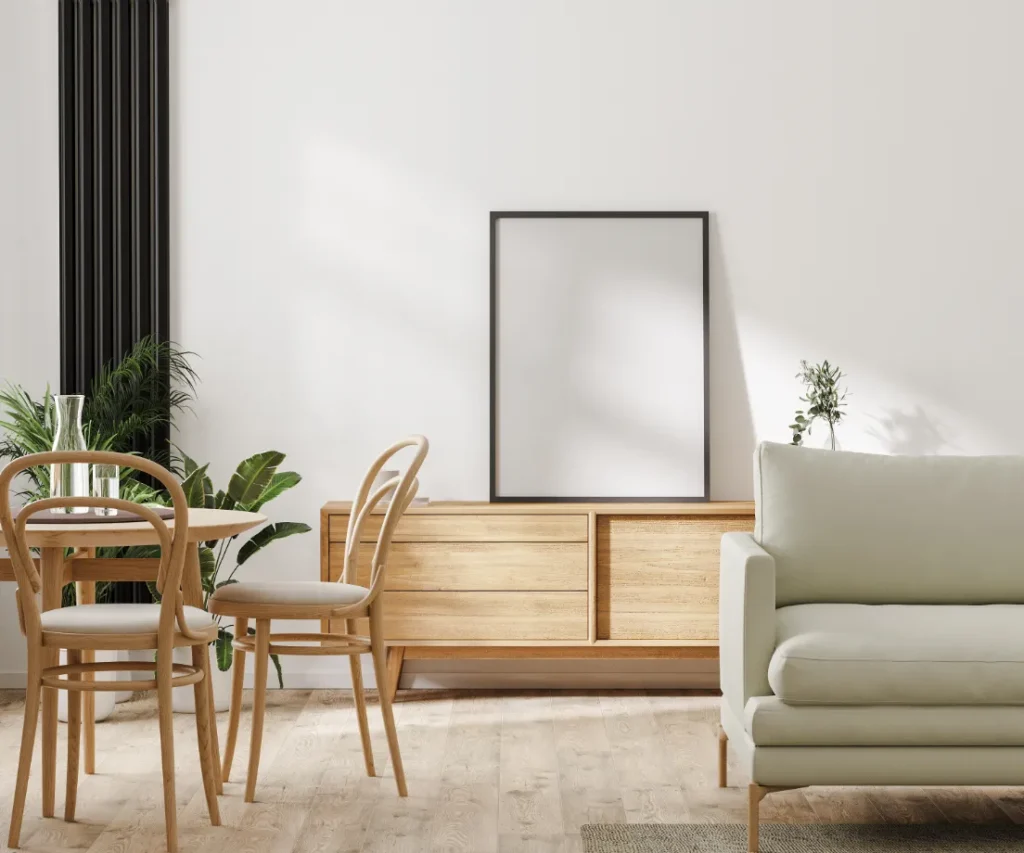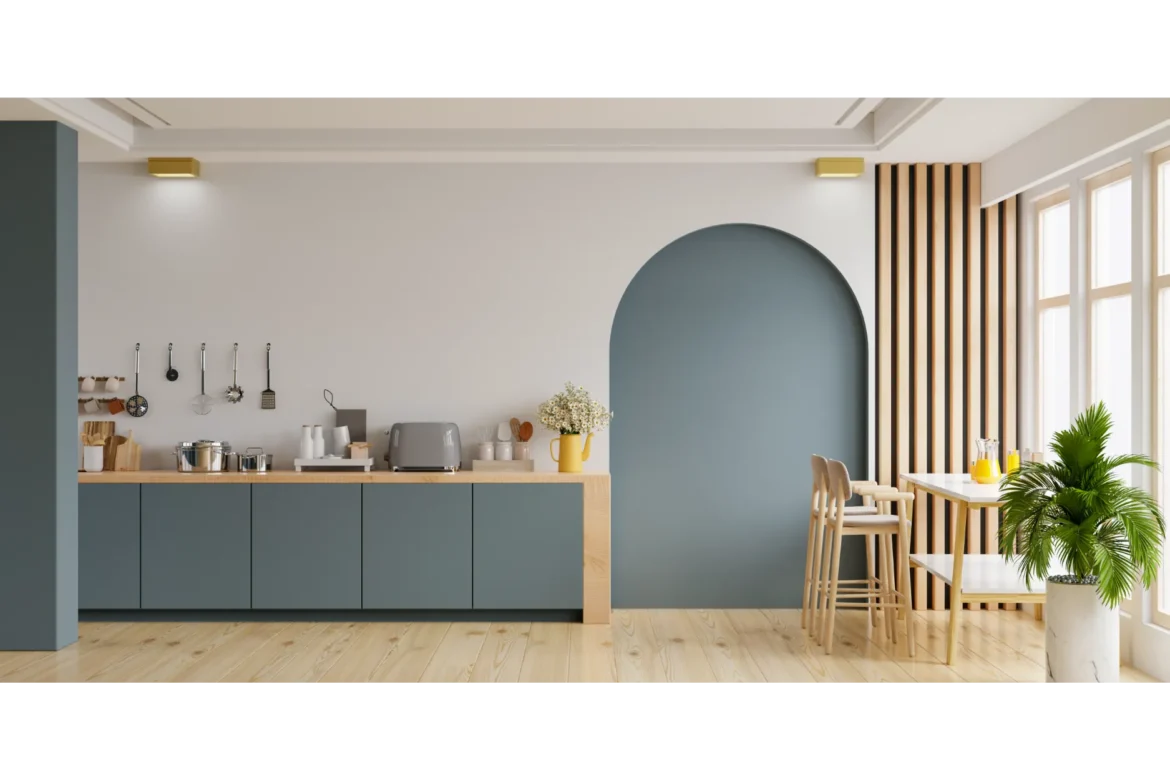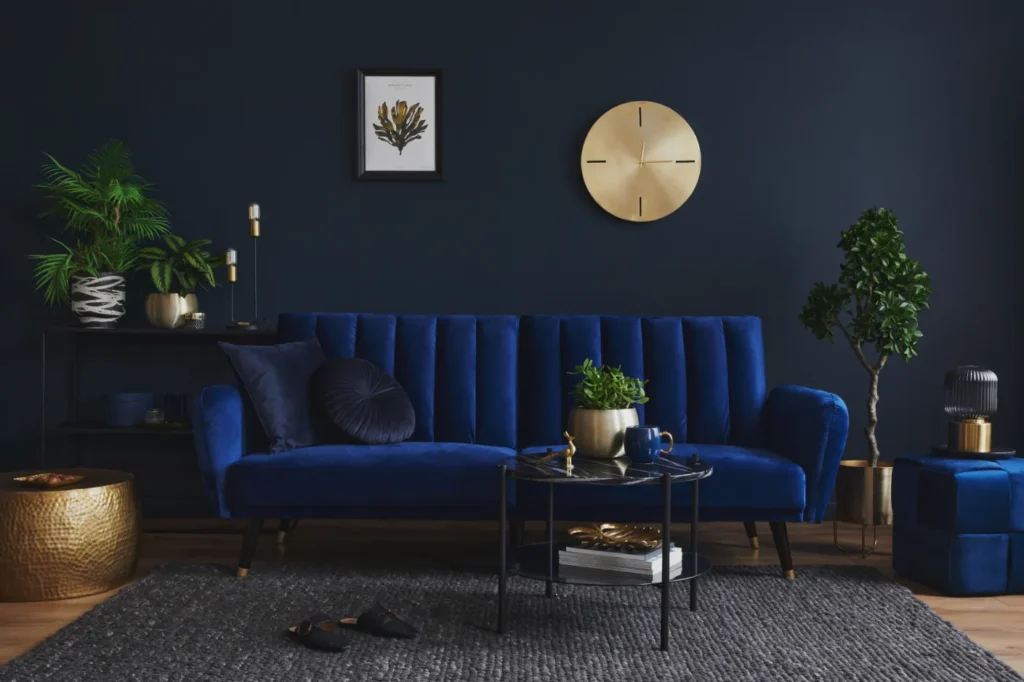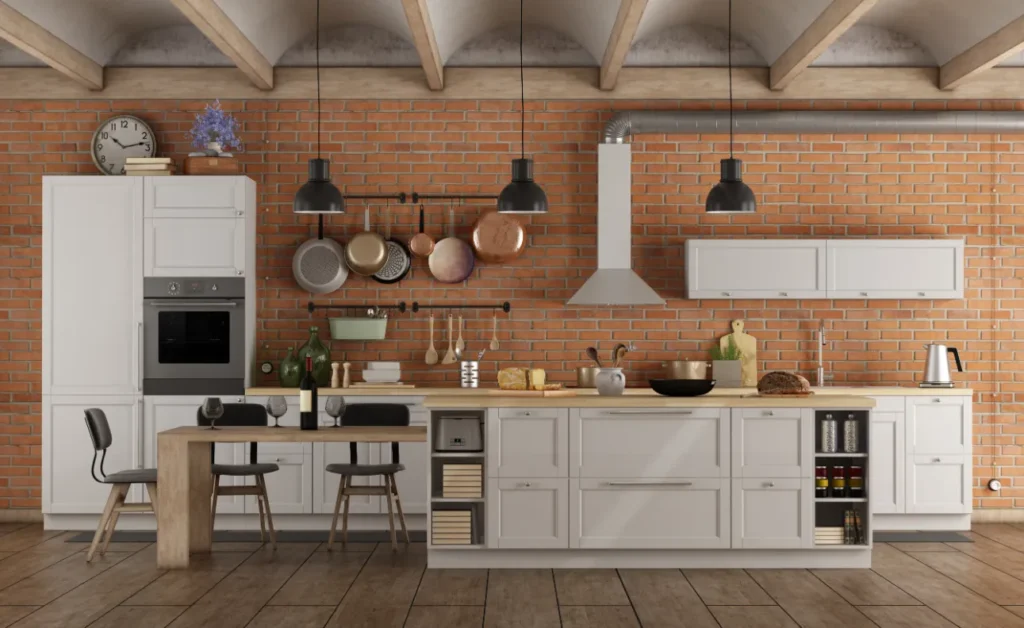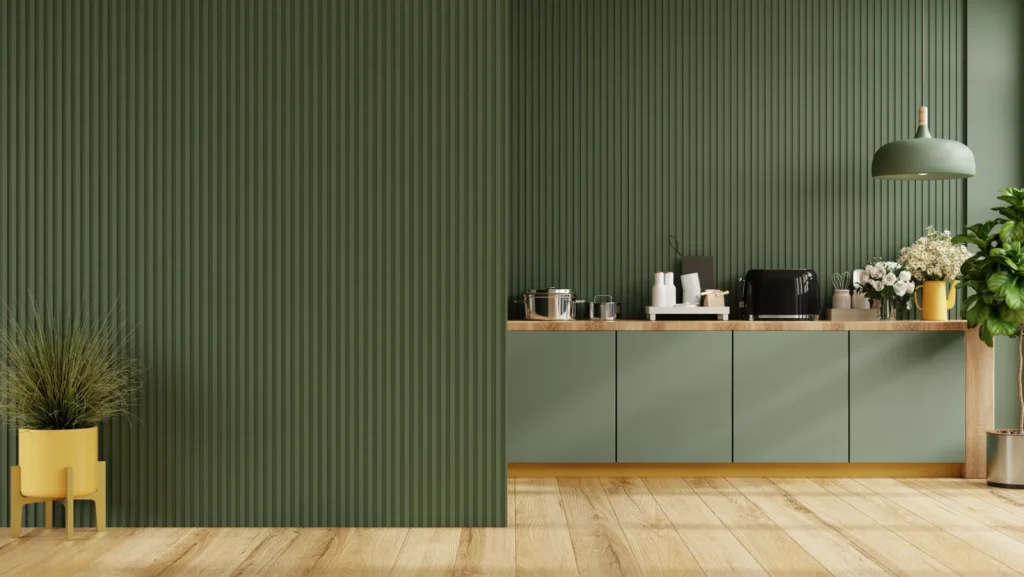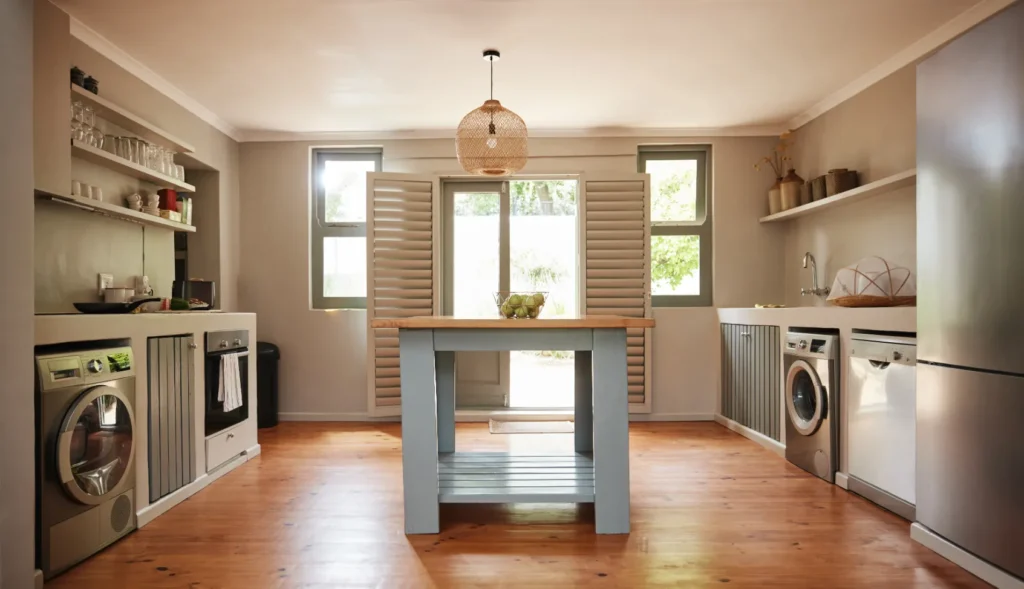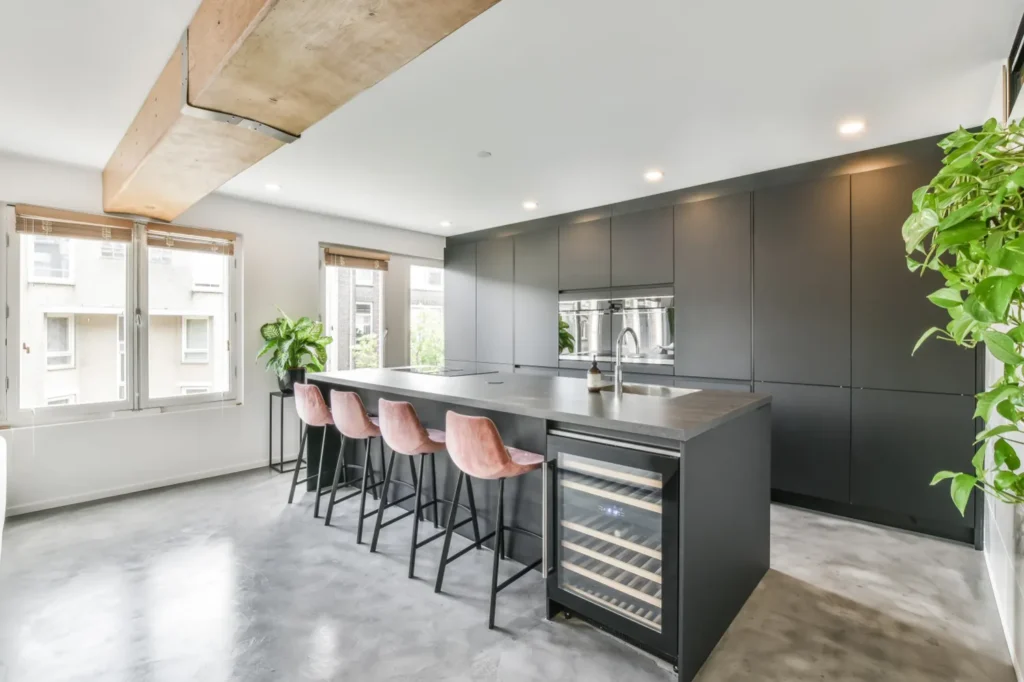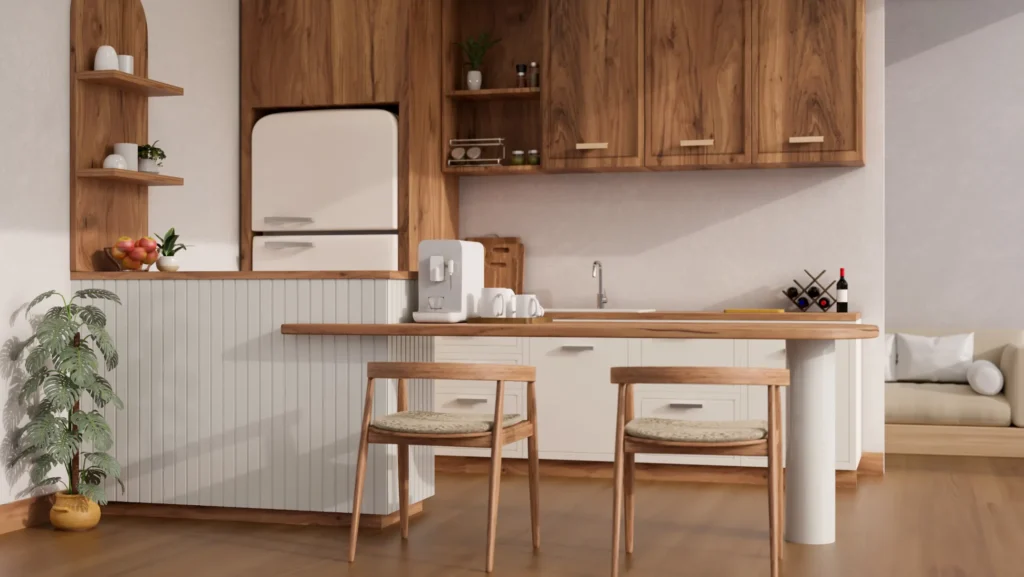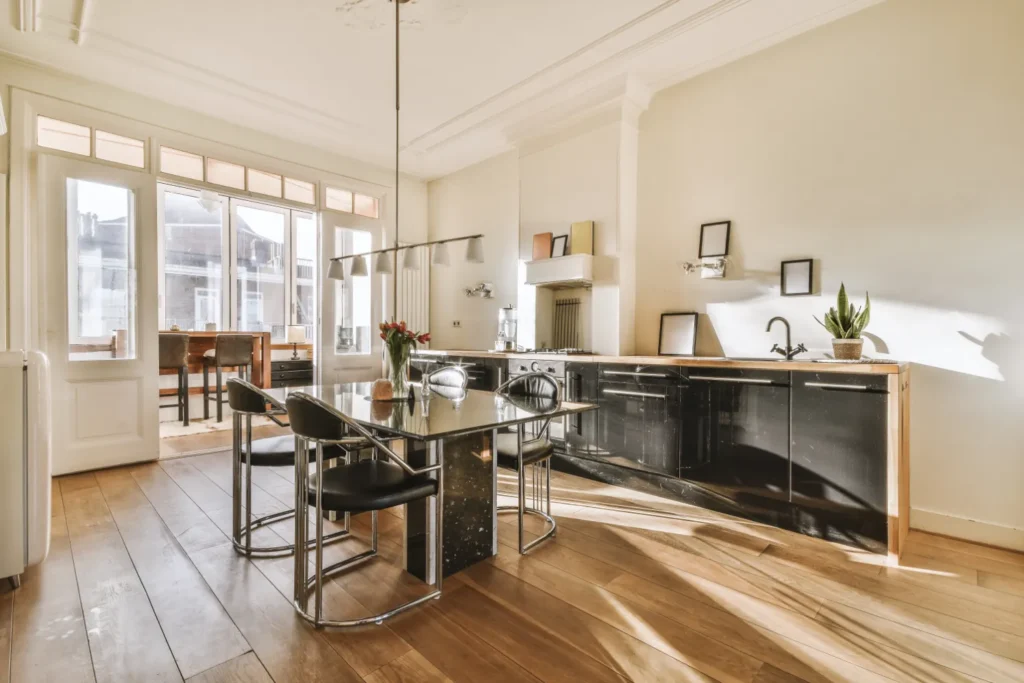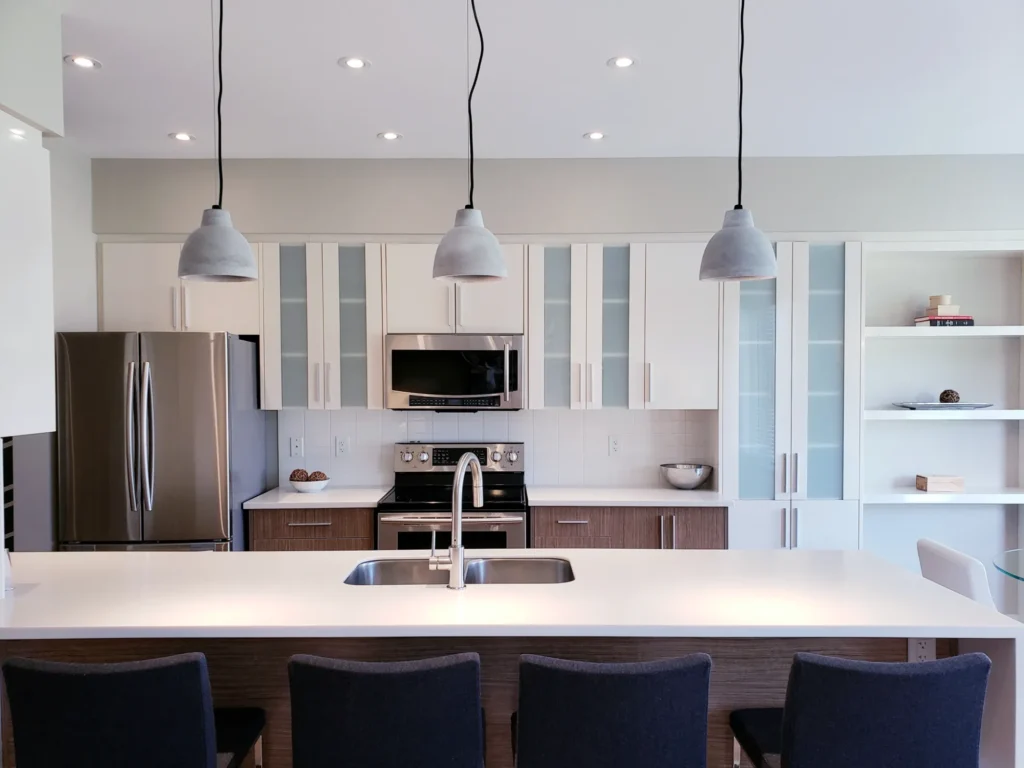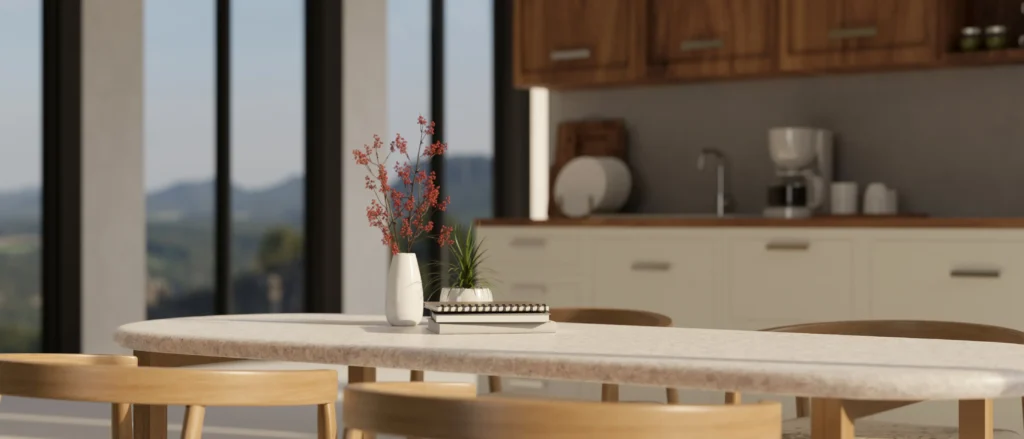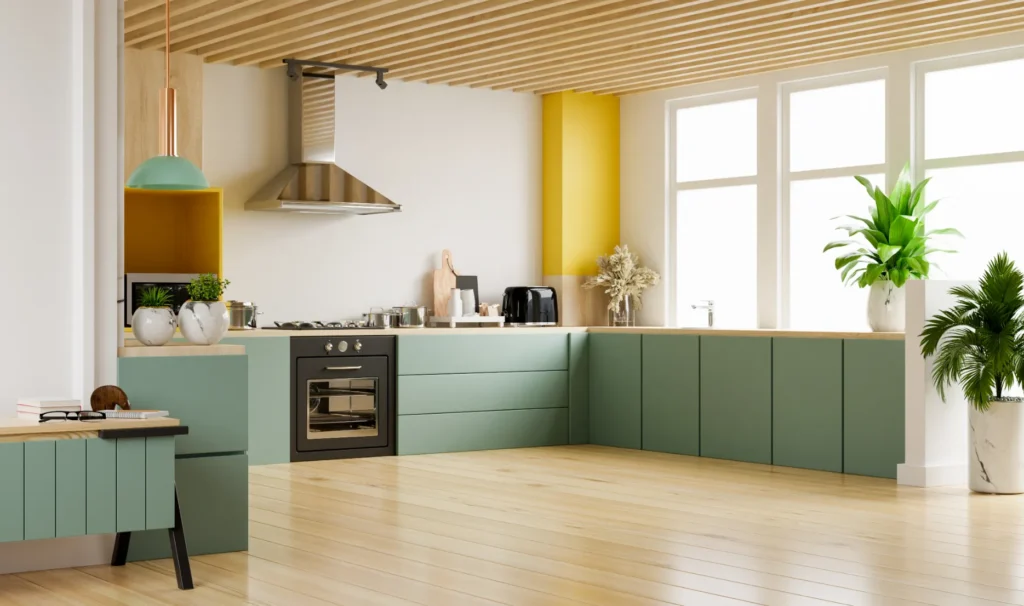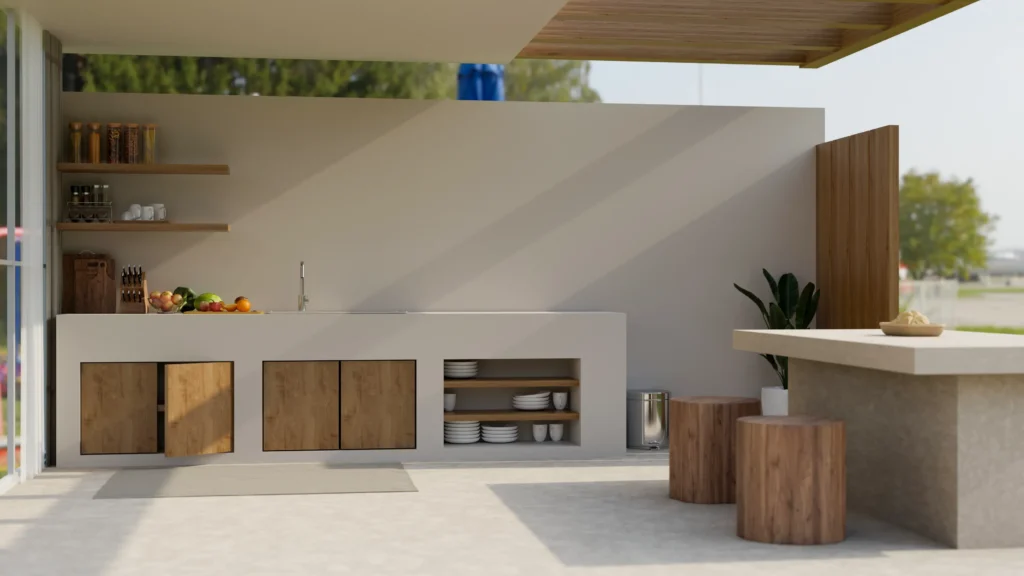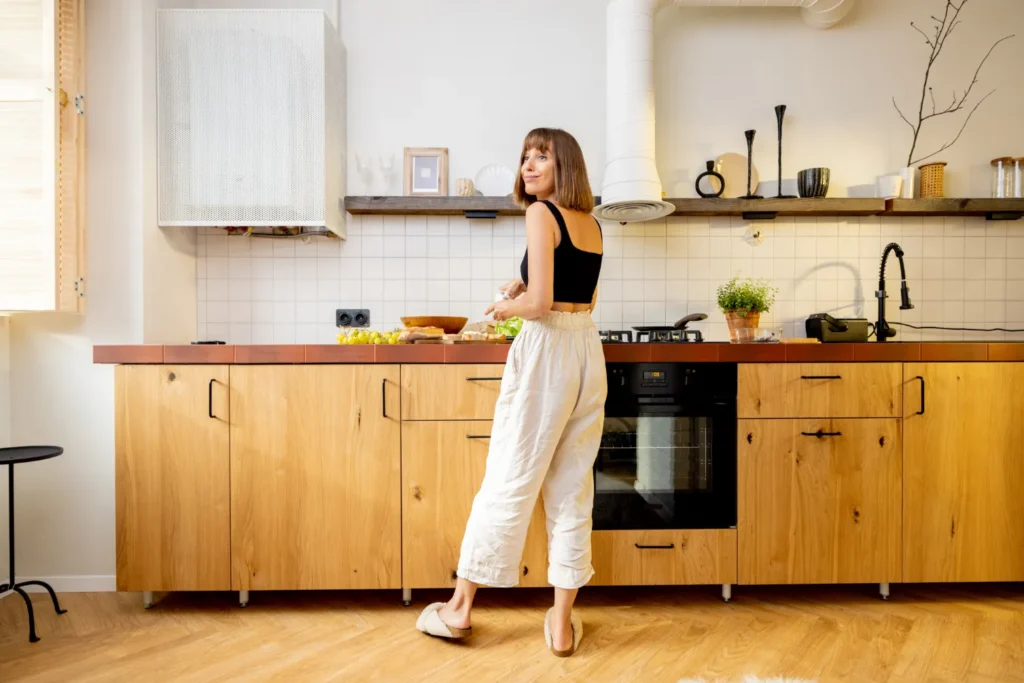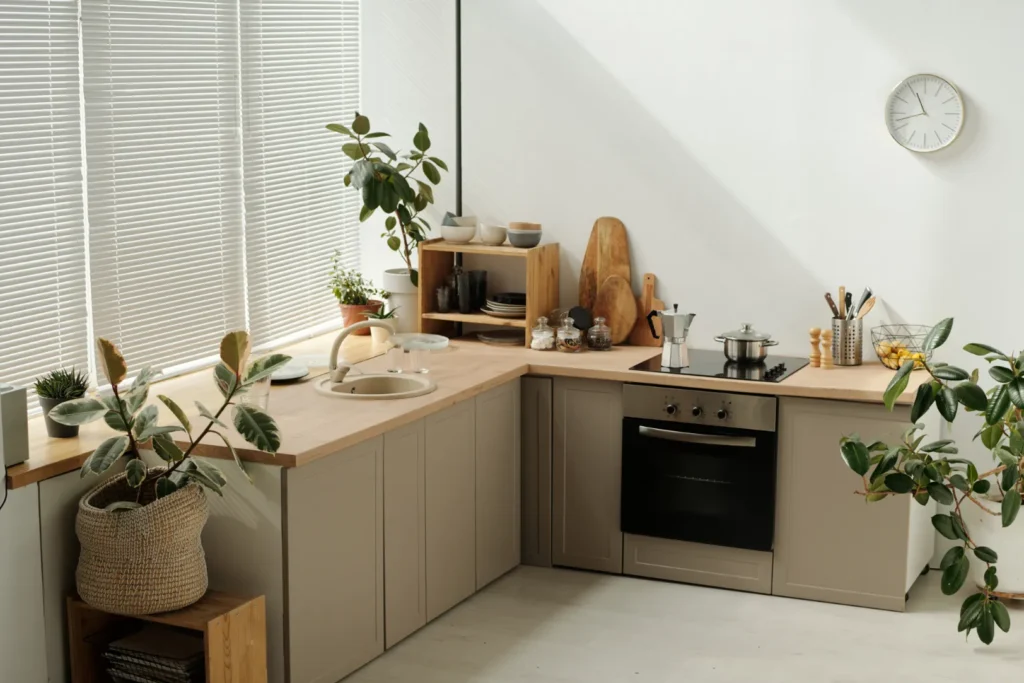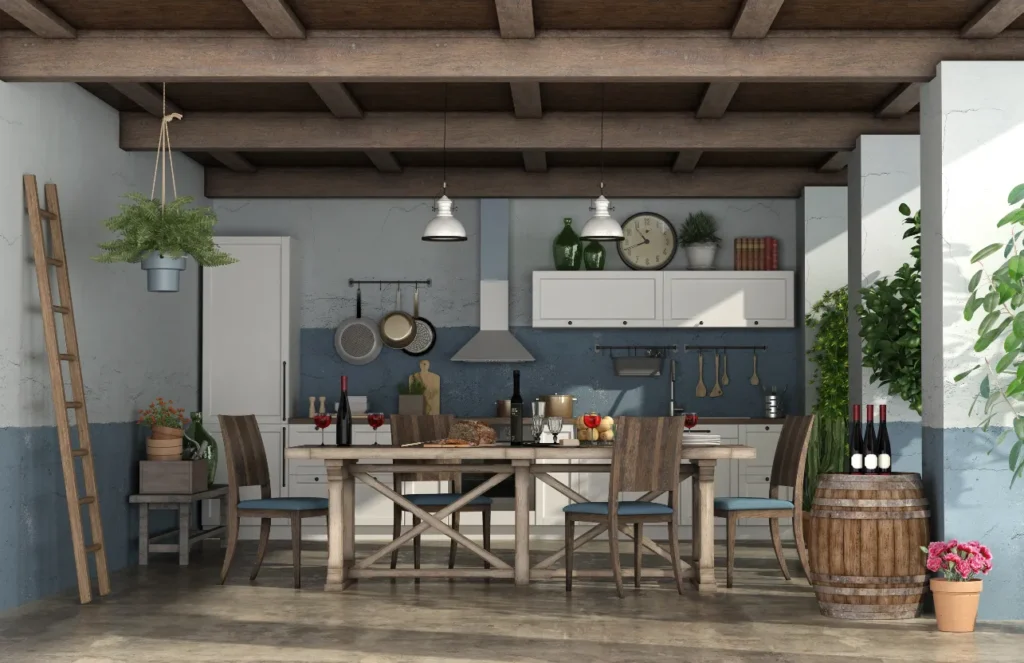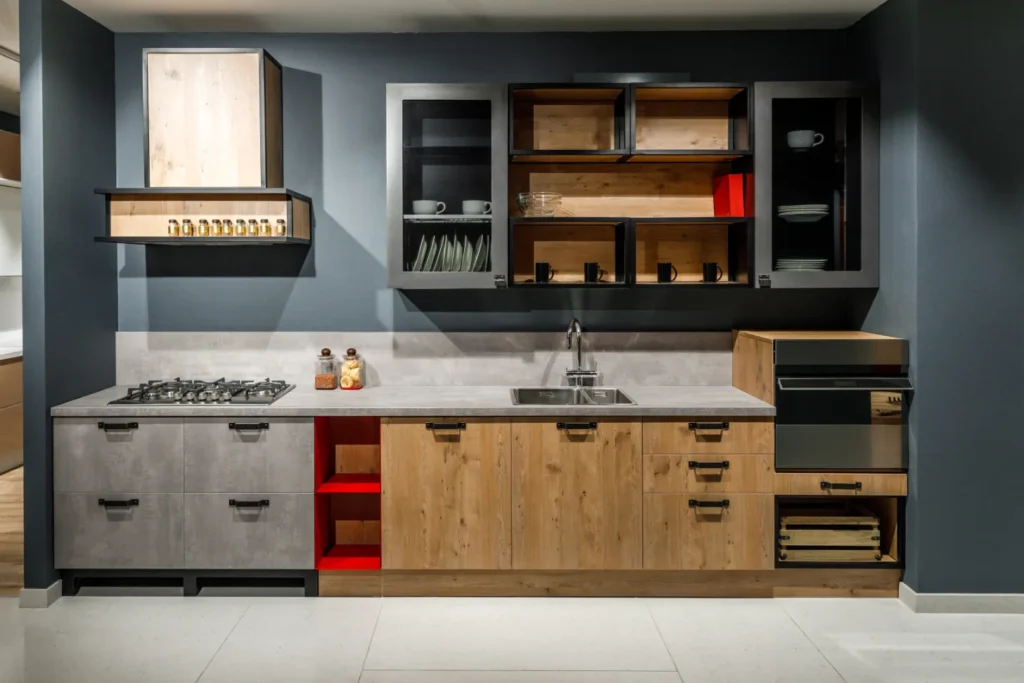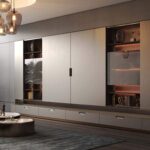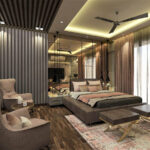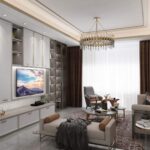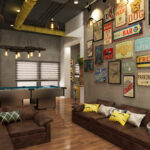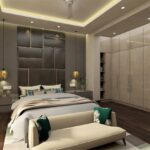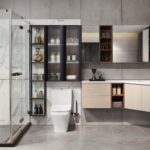4 Easy Materials In Interior Design To Amaze Your Clients
4 Easy Materials In Interior Design To Amaze Your Clients
Overview
Dive into the world of interior design materials. Explore trends, innovation, and timeless elegance for designers and homeowners alike.
In the world of interior design, materials are the storytellers, shaping narratives of style, comfort, and innovation.
In the fascinating realm of interior design, every part isn’t just an object; it’s like a storyteller. Among these, furniture stands as both a functional necessity and a canvas for artistic expression. The heartbeat of any interior, however, lies not just in the form but in the carefully chosen materials that give life to its contours. As the legendary architect Louis Sullivan once declared, “Form ever follows function,” and in the nuanced world of furniture, we might add, “Form follows material.”
In the pursuit of crafting spaces that resonate with personality and purpose, material selection emerges as a pivotal interior design choice. It’s not merely about choosing between wood, metal, or fabric; it’s about understanding the language each material speaks. The tactile warmth of wood can evoke a sense of timeless elegance, while the sleekness of metal may narrate a story of contemporary sophistication. Material, in essence, becomes the brushstroke that paints the emotions of a room.
To comprehend the significance of material in furniture design, we embark on a journey through time. The evolution of furniture mirrors the changing tides of societal values, technological advancements, and cultural shifts. From the ornate wooden masterpieces of the Renaissance to the industrial steel creations of the modern era, the history of furniture design is intertwined with the history of material innovation. Understanding this evolution is like decoding the language of interior design – a language spoken through the ages in the subtle nuances of chosen materials.
In the intricate dance between form and material, a symbiotic relationship emerges – a dance where one partner guides the steps of the other. The thesis of our exploration is rooted in the profound realization that the materials we choose for our furniture not only shape its physical form but also influence the ambiance of the entire space. This relationship is not one of dominance but of collaboration, where the material whispers suggestions to the form, and the form responds with grace.
In the chapters that follow, we will delve into the essence of various materials – wood, metal, upholstery, plastics, and composites – uncovering their unique voices in the symphony of interior design.
Also Read: Source Quality Materials For Your Full Home Design: 5 Tips
The Basics Of Material Influence In Interior Design
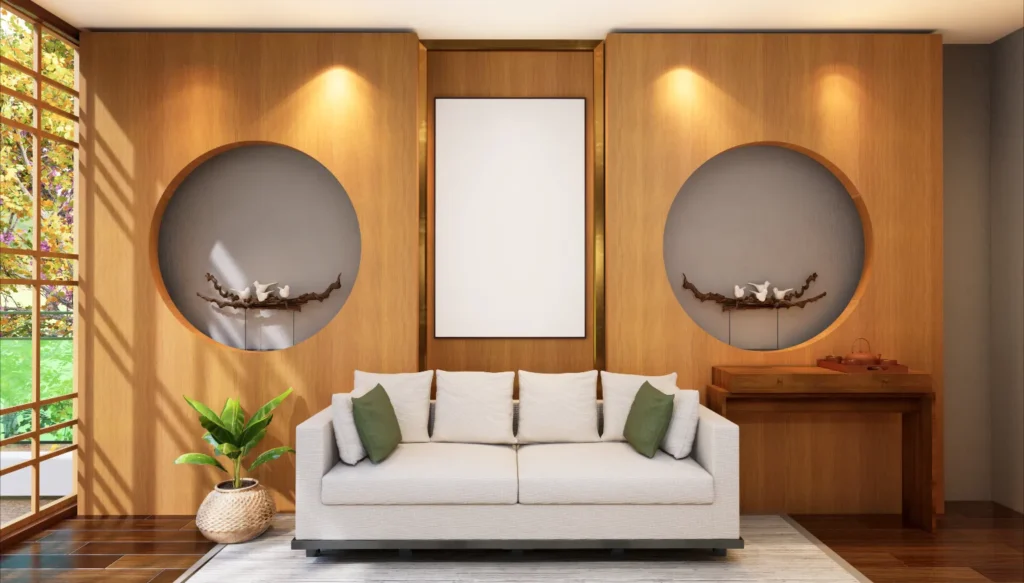
In the intricate world of interior design, the choices we make regarding materials wield a profound influence on the overall aesthetic and functionality of our living spaces. Let’s delve into the fundamental aspects of material influence, exploring how it shapes the visual appeal and practicality of furniture.
Understanding The Impact Of Material On Furniture Aesthetics
The texture, color, and finish of a material are the artists’ palettes on the canvas of interior design. Imagine a living room adorned with a plush, velvet sofa—its soft texture invites touch, the rich color sets the mood, and the glossy finish adds a touch of sophistication. Alternatively, a rough-hewn wooden coffee table might evoke a sense of rustic charm with its natural texture and warm hues.
Materials become the language through which design styles speak. A sleek, polished metal may resonate with a modern, minimalist vibe, while the intricate patterns of upholstered fabric can channel a more traditional or eclectic aesthetic. It’s a visual symphony where each material plays a unique note, harmonizing with the overall interior design composition.
Functional Considerations: Durability, Maintenance, And Practicality
How Material Choice Affects the Lifespan of Furniture
Beyond aesthetics, the durability of materials is a critical consideration in interior design. Picture a family room where the furniture sees daily wear and tear. Opting for sturdy materials, such as hardwood or premium upholstery, is a crucial tactic to guarantee the lasting resilience of your furniture. It involves selecting materials that can endure the daily challenges of life without compromising their aesthetic appeal.
Take leather, for instance. Beyond its luxurious appearance, leather is recognized for its robustness. When properly maintained, a leather sofa can uphold its elegance for an extended period, making it a valuable investment in both style and durability.
Balancing Aesthetics with Usability
In the dance between aesthetics and usability, material choices play a crucial role. Take kitchen chairs, for instance. While a delicate, intricately designed chair might be visually appealing, it may not offer the comfort and durability needed for daily use. In this scenario, choosing a material that balances both aspects becomes paramount – perhaps a combination of metal for structure and a comfortable upholstery for seating.
Think of it as finding the sweet spot where the material enhances the aesthetic appeal while ensuring the furniture serves its functional purpose seamlessly. Striking this balance creates spaces that not only look stunning but also feel comfortable and are practical for everyday living.
Wood: A Timeless Elegance
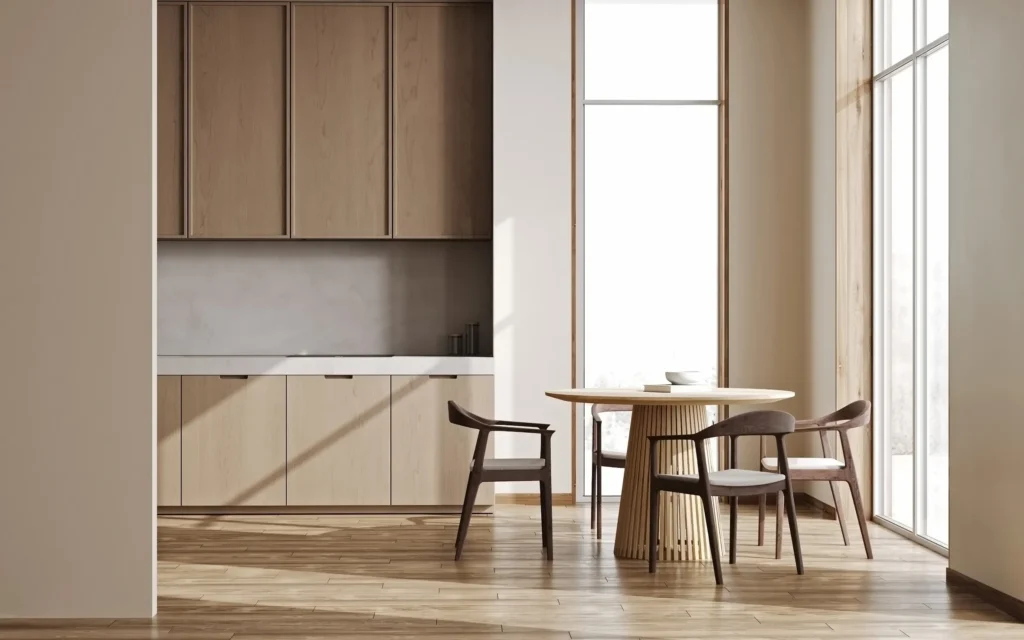
Wood, with its innate warmth and versatility, has been a staple in interior design for centuries. In this section, we’ll explore the enduring charm of wood, from its traditional appeal in classic furniture designs to the modern innovations that shape contemporary interiors.
Traditional Appeal: Classic Furniture Designs
Wooden furniture holds a timeless appeal, often associated with craftsmanship and enduring beauty. Think of a mahogany dining table, intricately carved with classic motifs—a piece that transcends trends, creating an atmosphere of sophistication and heritage within a space.
Whether it’s a regal oak wardrobe or a handcrafted teak coffee table, traditional wooden furniture pieces carry a sense of history and craftsmanship. The natural grain patterns and warm tones of wood contribute to an inviting ambiance, making it a go-to choice for those seeking a classic and enduring aesthetic in their interiors.
Modern Innovations In Wood Furniture
Engineered Wood Products
In the evolution of wood furniture, modern technology has given rise to engineered wood products. Materials like plywood and MDF (medium-density fiberboard) bring together wood fibers, adhesives, and occasionally additional substances to craft adaptable and budget-friendly substitutes for solid wood.
Engineered wood products offer a contemporary twist on traditional design. For instance, a sleek, minimalist bookshelf made from plywood can seamlessly blend into a modern living space while providing the strength and durability associated with traditional hardwood.
Sustainable Sourcing and Its Influence on Interior Design
As the world embraces sustainable practices, the sourcing of wood for furniture has undergone a significant transformation. The shift towards responsible forestry and eco-friendly practices has influenced not only the environmental impact but also the design ethos of wooden furniture.
Consider the use of reclaimed wood in contemporary designs. Furniture crafted from reclaimed timber not only adds character with its weathered appearance but also contributes to the conservation of forests. Sustainable sourcing has become a defining factor in modern wood furniture, aligning with the values of environmentally conscious interior design.
Traditional Appeal: Imagine a cherry wood four-poster bed in a master bedroom, radiating timeless elegance. The rich, deep hues of the wood create a luxurious and inviting atmosphere, embodying the essence of classic interior design.
Modern Innovations: Visualize a modern kitchen with cabinets made from sleek, white oak plywood. The clean lines and contemporary feel of the engineered wood perfectly complement the minimalist aesthetic while ensuring durability and practicality.
Sustainable Sourcing: Picture a dining table crafted from reclaimed barn wood. The knots, grain variations, and imperfections tell a story of the wood’s past life, creating a unique and environmentally conscious focal point in a dining room.
Metal: Embracing Contemporary Elegance
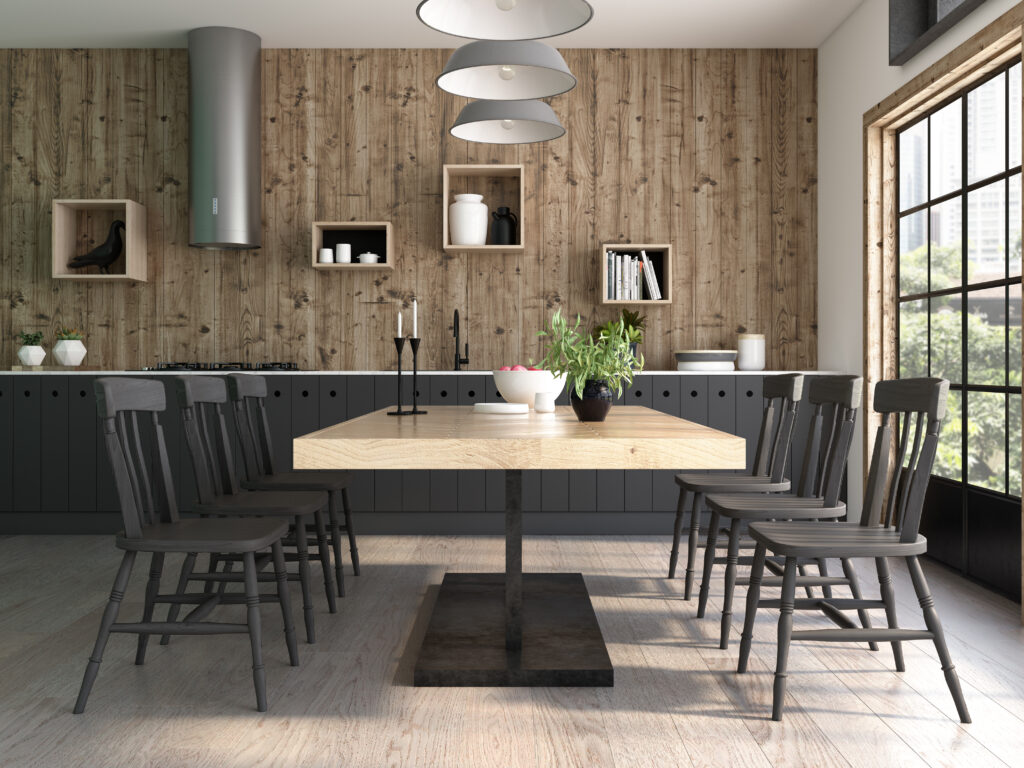
Metal, once confined to industrial spaces, has asserted its dominance in modern interior design. In this section, we’ll explore the ascent of metal in contemporary furniture, examine the impact of varied metal finishes, and unravel the distinctive aesthetics achieved by blending metal with other materials.
The Ascendance Of Metal In Modern Furniture Design
Metal, with its sleek and minimalist allure, has become synonymous with modern interior design. Its popularity is attributed to its versatility, durability, and capacity to infuse spaces with a touch of contemporary sophistication. From stainless steel coffee tables to chairs with aluminum frames, metal has evolved beyond its utilitarian origins, becoming an emblem of sleekness in today’s interior landscape.
This evolution is evident in iconic pieces like the Barcelona Chair, envisioned by Mies van der Rohe. The stainless steel frame not only reinforces the structure but also introduces enduring elegance to the design. The prominence of metal in furniture design reflects a broader shift towards clean lines and an emphasis on functionality in contemporary interiors.
Exploring Varied Metal Finishes And Their Influence
Metal offers a diverse palette of finishes, each imparting a distinct character to furniture pieces. Consider brushed nickel, with its muted and textured surface, adding understated luxury to fixtures like lamps or cabinet handles. In contrast, polished chrome exudes a high-gloss sheen, infusing a modern and reflective quality to furniture legs or frames.
The choice of metal finish significantly impacts the overall aesthetic of a space. For instance, a dining table with an antique bronze finish may evoke vintage charm, while a sleek, black powder-coated metal frame can introduce an industrial edge into a contemporary living room.
Harmonizing Metal With Other Materials For Distinctive Aesthetics
A hallmark of modern interior design is the strategic combination of materials to create visually striking and harmonious compositions. The synergy of metal with materials such as glass, wood, or upholstery opens up a myriad of design possibilities.
Envision a coffee table with a metal base and a glass top, where the transparency of the glass allows the metalwork to take center stage. The interplay between the solid, structured metal and the delicate transparency of the glass creates a visually dynamic and balanced piece.
The Eames Lounge Chair and Ottoman, a mid-century modern classic, beautifully integrates metal and leather. The molded aluminum base not only provides sturdy support but also complements the luxurious leather upholstery, resulting in an iconic piece seamlessly blending materials for both style and comfort.
Metal in Modern Design: Imagine a sleek kitchen with stainless steel countertops and appliances, evoking a professional and contemporary ambiance. The reflective surfaces of the metal enhance the overall brightness and modernity of the kitchen.
Diverse Metal Finishes: Picture a bathroom with matte black metal faucets and fixtures. The muted finish adds a touch of sophistication and gracefully complements the porcelain features, resulting in a cohesive and contemporary interior design.
Combining Metal with Other Materials: Visualize a dining chair with a metal frame and a seat upholstered in rich velvet. The juxtaposition of sturdy metal and plush velvet not only adds visual interest but also brings together elements of durability and luxury.
In the dynamic narrative of interior design, metal stands as a versatile and impactful protagonist, contributing to spaces that seamlessly blend contemporary elegance with functional prowess. As we continue our exploration, we’ll uncover the stories woven by other materials, each playing a unique role in the symphony of interior aesthetics.
Upholstery: From Fabric To Leather
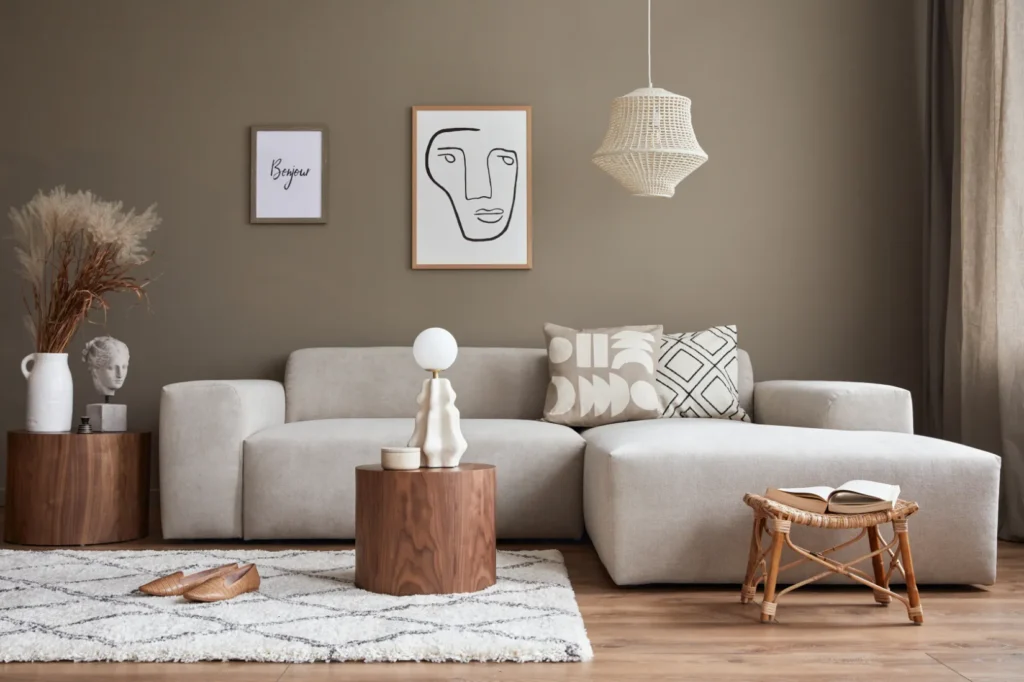
Upholstery is the silent storyteller of furniture, adding layers of comfort, style, and personality. In this section, we’ll unravel the impact of fabric selection on furniture form, explore the timeless allure of leather furniture, and delve into the realm of sustainability in upholstery – a crucial consideration in contemporary interior design.
Impact Of Fabric Selection On Furniture Form
The choice of upholstery fabric plays a pivotal role in shaping the form and aesthetics of furniture. Imagine a plush velvet sofa, its soft and luscious texture creating a sense of opulence and inviting relaxation. On the other hand, a sleek, tailored chair in a crisp linen fabric exudes a more contemporary and refined feel.
The texture, color, and pattern of the fabric can significantly influence the overall design. Patterns like stripes or florals can add visual interest, while a solid, neutral fabric can provide a timeless and versatile foundation. Understanding the impact of fabric on furniture form allows for intentional choices that align with the desired aesthetic and functionality of a space.
The Timeless Allure Of Leather Furniture
Leather furniture epitomizes enduring sophistication, providing an exclusive fusion of luxury, resilience, and adaptability. Consider the iconic Chesterfield sofa, adorned in rich leather – its deep tufting and supple feel elevate it to a symbol of classic elegance.
Leather ages gracefully, developing a beautiful patina over time. This quality not only adds character to the furniture but also makes it a long-lasting investment. The inherent ability of leather to adapt to various interior styles, from traditional to modern, makes it a timeless choice that transcends fleeting trends.
Sustainability In Upholstery: Eco-Friendly Choices And Design Implications
As the world embraces sustainable living, upholstery choices are no exception. Eco-friendly options have gained prominence, introducing materials that minimize environmental impact without compromising on style and comfort.
Consider furniture upholstered in recycled or organic fabrics. These materials, derived from sustainable sources, contribute to reducing the ecological footprint of furniture production. Furthermore, progress in technology has given rise to synthetic leather alternatives that mimic the appearance and texture of real leather, all while avoiding environmental drawbacks.
Impact of Fabric Selection: Visualize a mid-century modern sofa with geometric-patterned upholstery, adding a playful touch to a living room. The carefully chosen fabric not only enhances the form but also infuses personality into the space.
Timeless Allure of Leather: Imagine a study adorned with a leather club chair – its worn-in charm and rich tones create a cozy and inviting atmosphere. The versatility of leather ensures it remains a classic choice that stands the test of time.
Sustainability in Upholstery: Picture a contemporary sectional sofa upholstered in recycled fabric. This eco-friendly choice not only aligns with sustainable practices but also showcases that style and environmental responsibility can coexist harmoniously.
Plastics And Composites: Innovation And Versatility
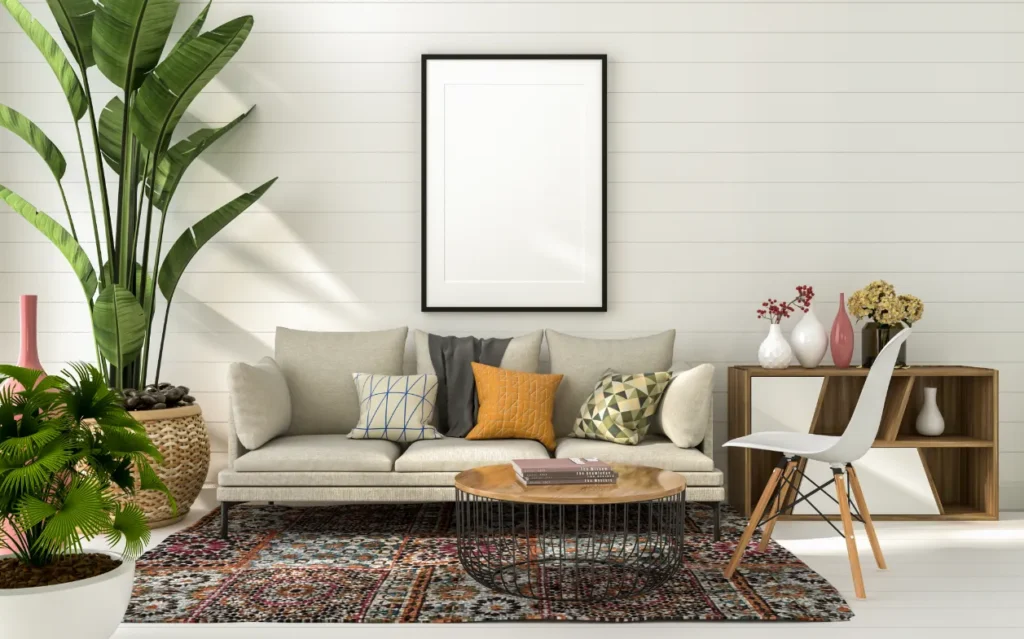
Contemporary Furniture Crafted From Plastics And Composites
The era when plastics were confined to basic utility is a thing of the past. Today, forward-thinking designers are harnessing the potential of plastics and composite materials to craft furniture seamlessly marrying aesthetic appeal with functionality. Consider the iconic Panton Chair—a fluid and futuristic piece molded entirely from plastic. Its sculptural form not only introduces a modern touch to spaces but also exemplifies the transformative power of plastic in design.
Exploring The Versatility Of These Materials In Furniture Design
Plastics and composites provide an expansive playground for creative expression in furniture design. The versatility of these materials allows for the creation of shapes and forms that might pose challenges with traditional materials. Envision a dining table with a gracefully contoured base, made possible by the flexibility and malleability of composite materials. This adaptability empowers designers to push boundaries, resulting in furniture pieces that redefine conventional notions of form.
The Impact Of Technology On Material Choices
Technology stands as a key player in unlocking the potential of plastics and composites in interior design. Sophisticated manufacturing methods, including 3D printing and injection molding, facilitate the precise and detailed crafting of furniture pieces using these materials. This technological influence not only enhances the structural integrity of the furniture but also allows for intricate detailing and customization.
Contemporary Furniture: Imagine a minimalist outdoor chair made from durable polypropylene. Its clean lines and weather-resistant properties make it a perfect addition to modern outdoor spaces, showcasing how plastics have evolved to meet both aesthetic and practical needs.
Versatility in Design: Picture a composite coffee table with a seamless blend of wood fibers and resin. The result is a piece that mimics the warmth of wood while offering the durability and flexibility of composites, illustrating the limitless possibilities in shaping furniture.
Impact of Technology: Visualize a uniquely designed lighting fixture crafted through 3D printing, showcasing the intricate possibilities when technology meets composite materials.
Conclusion
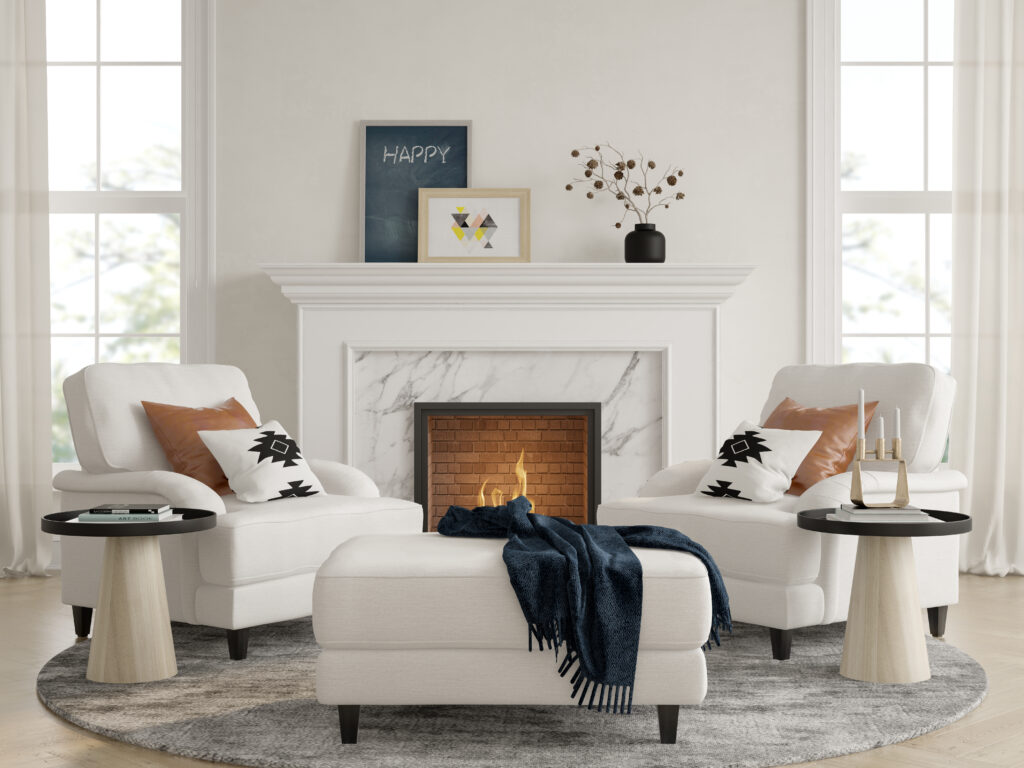
From the timeless elegance of wood to the contemporary sleekness of metal, and the innovative versatility of plastics, our exploration has unveiled the artistry behind material selection. As we celebrate this journey through form, function, and aesthetics, let it resonate that, in the hands of skilled designers, materials become more than mere elements—they become storytellers, weaving narratives of style, comfort, and ingenuity.
The White Frame is not just another interior design and build firm, we are proud to offer you the professional service levels of global standards and a deep respect for both contemporary and traditional interior design, Headquartered in Gurgaon, and extend our services across diverse cities, including Gurgaon, South Delhi, Delhi-NCR, North India, Mumbai, Chandigarh, Jaipur, and Agra.
Explore some of our work here!
Cheers to the creation of your dream home!


